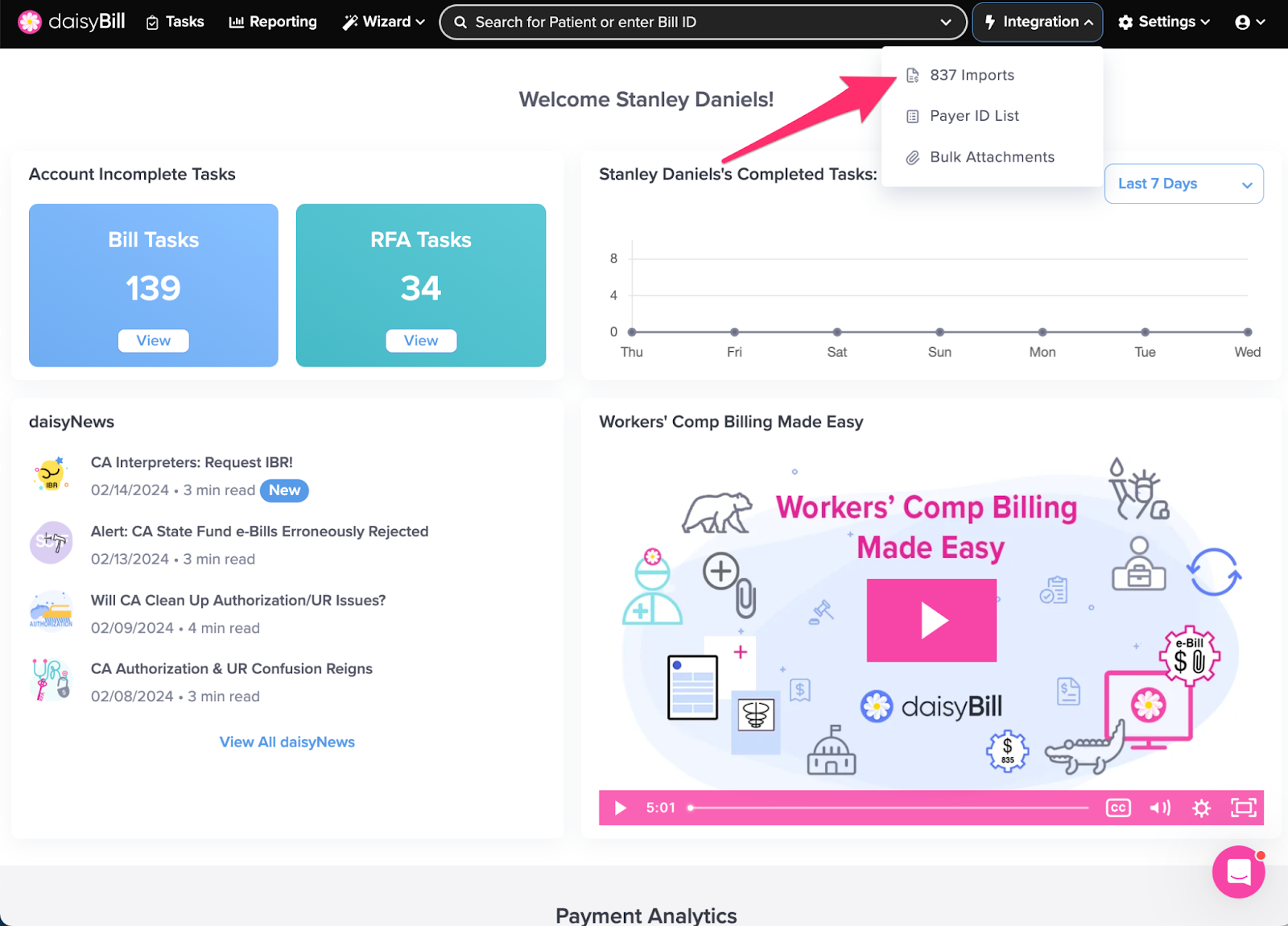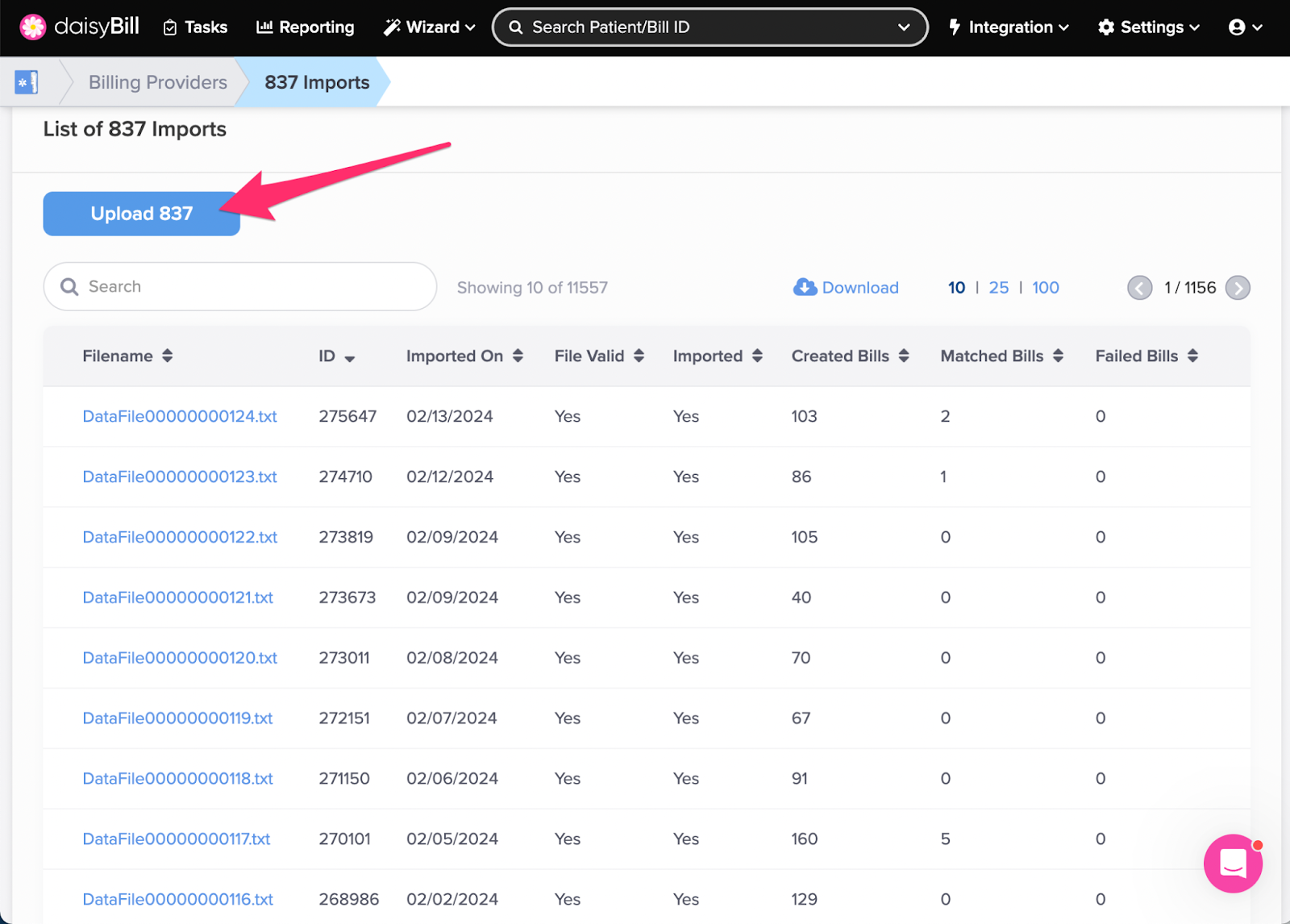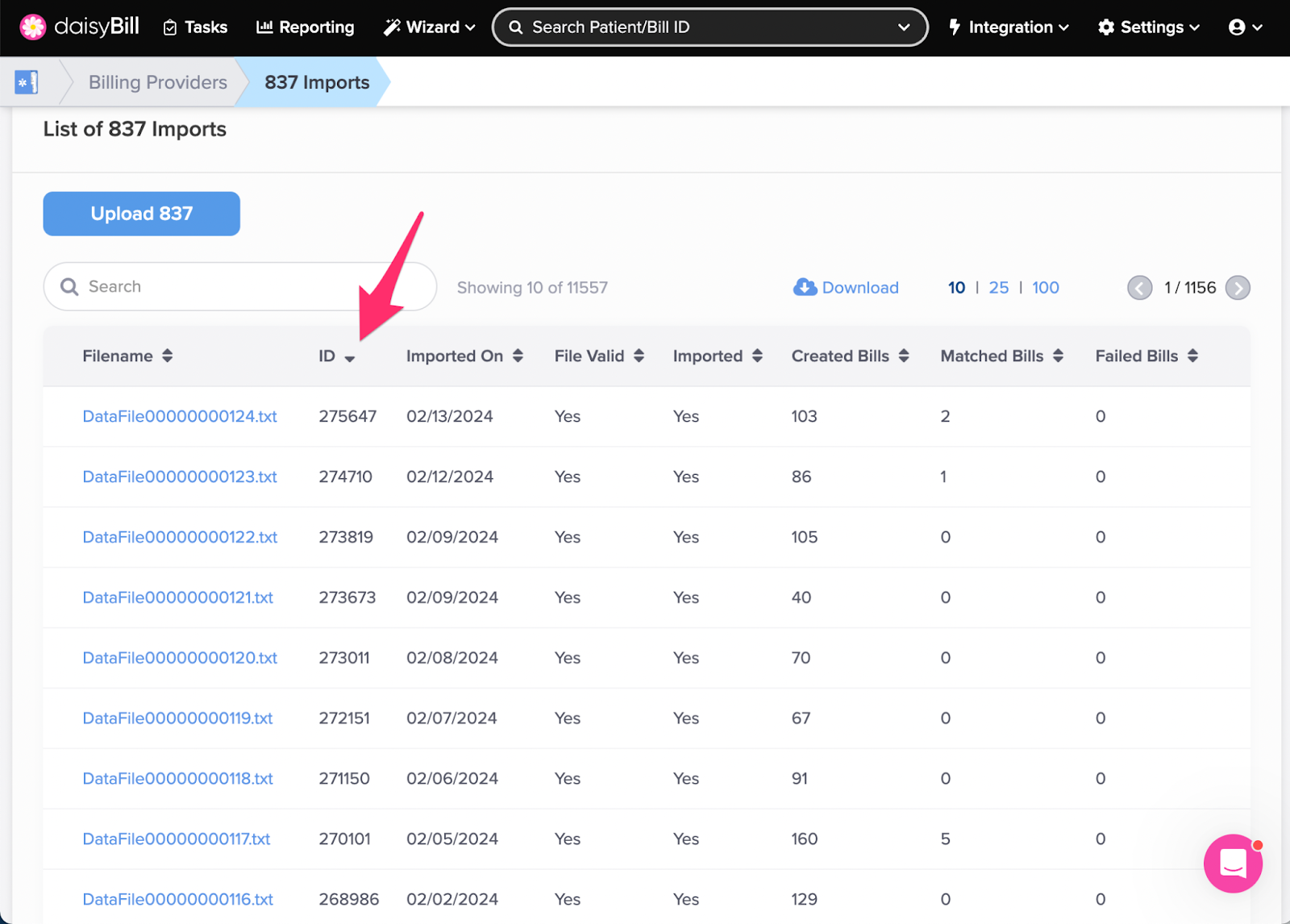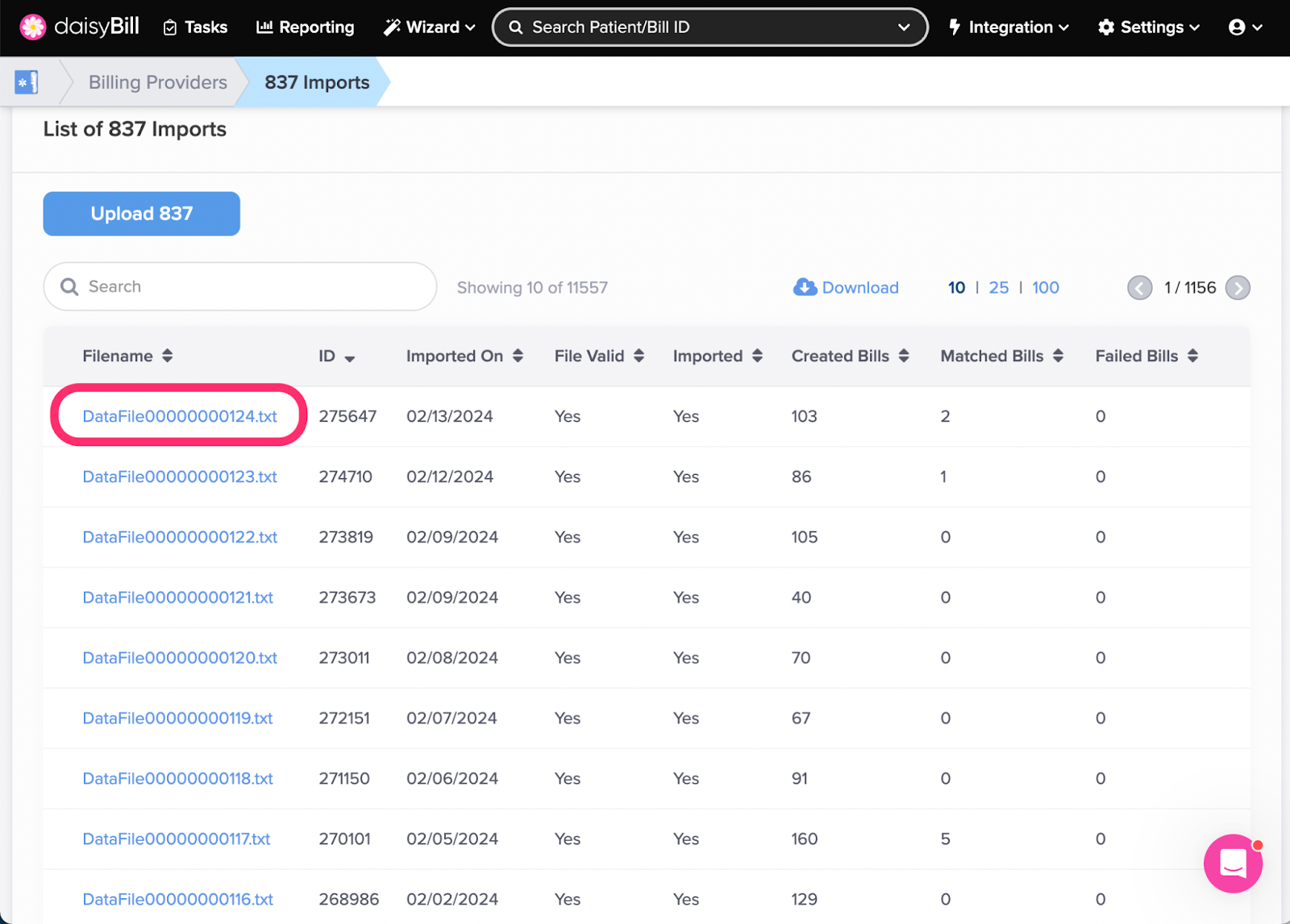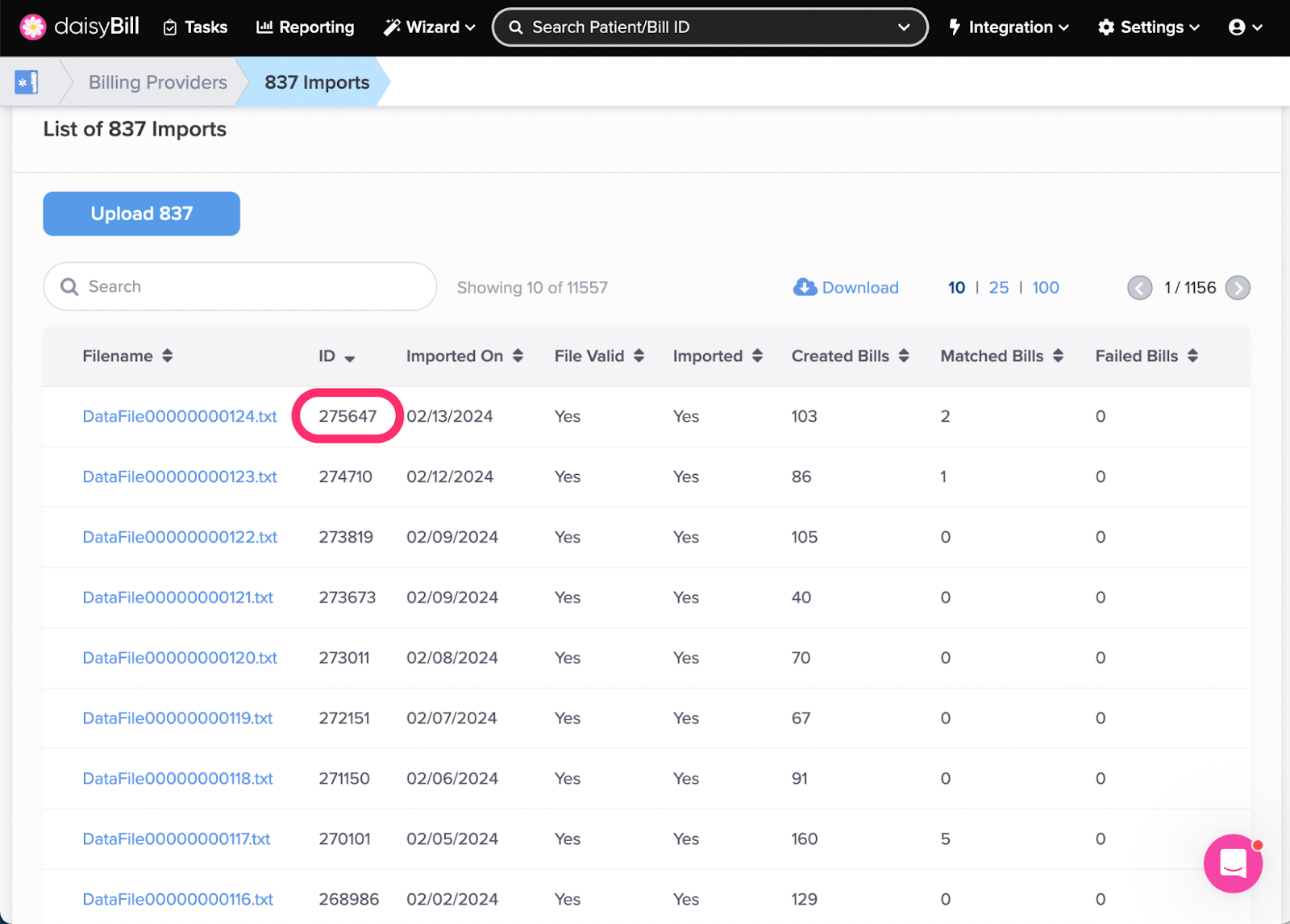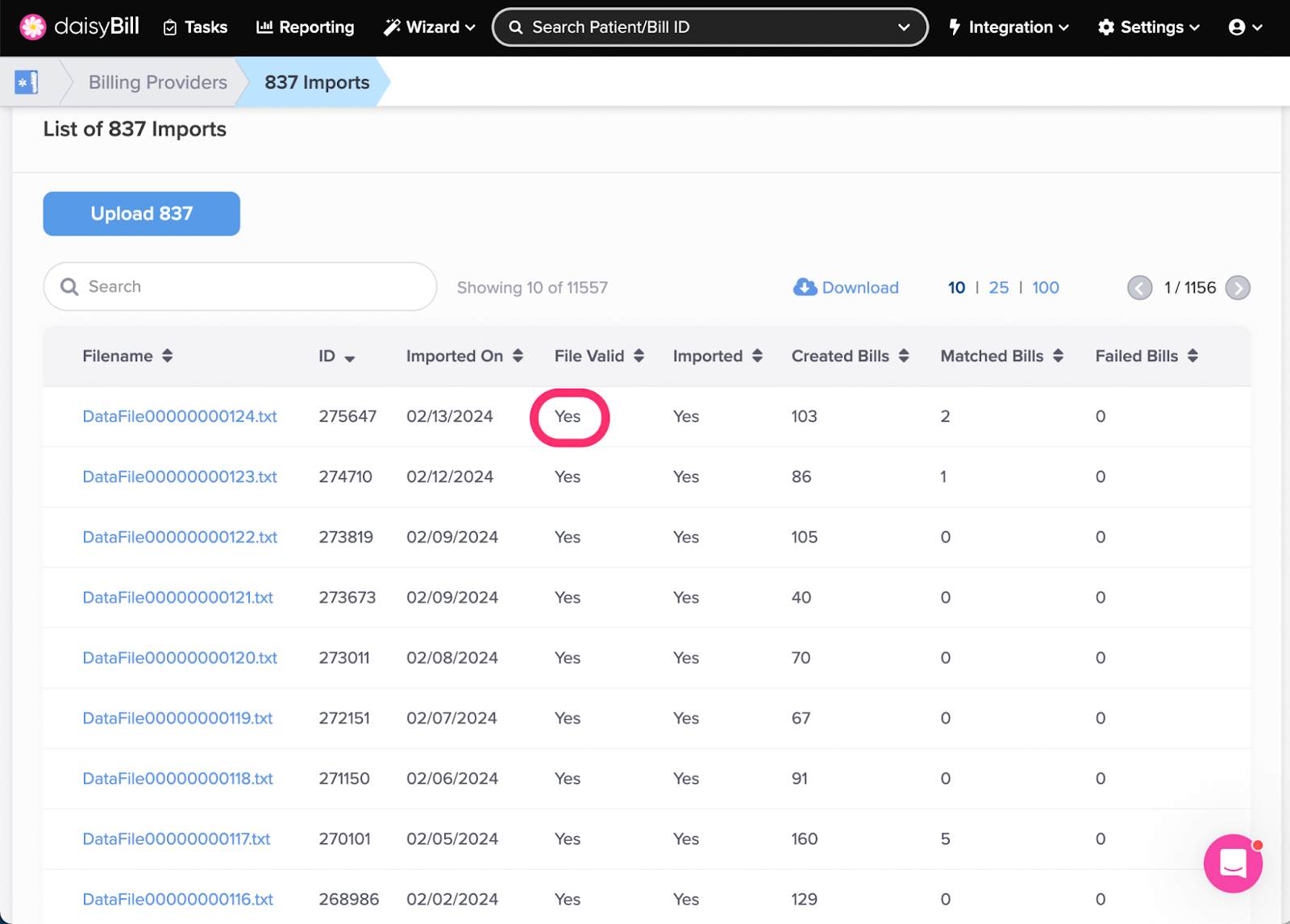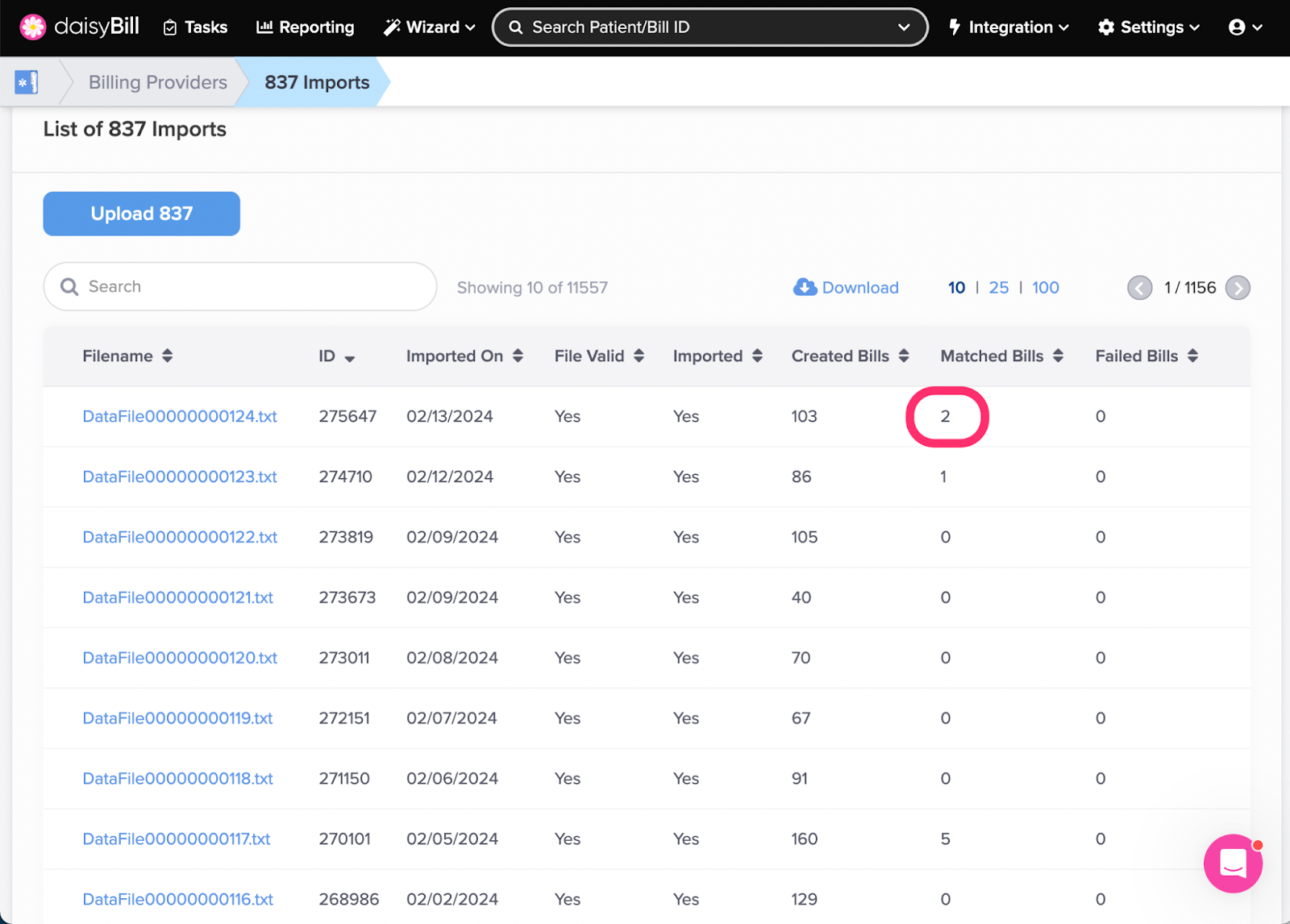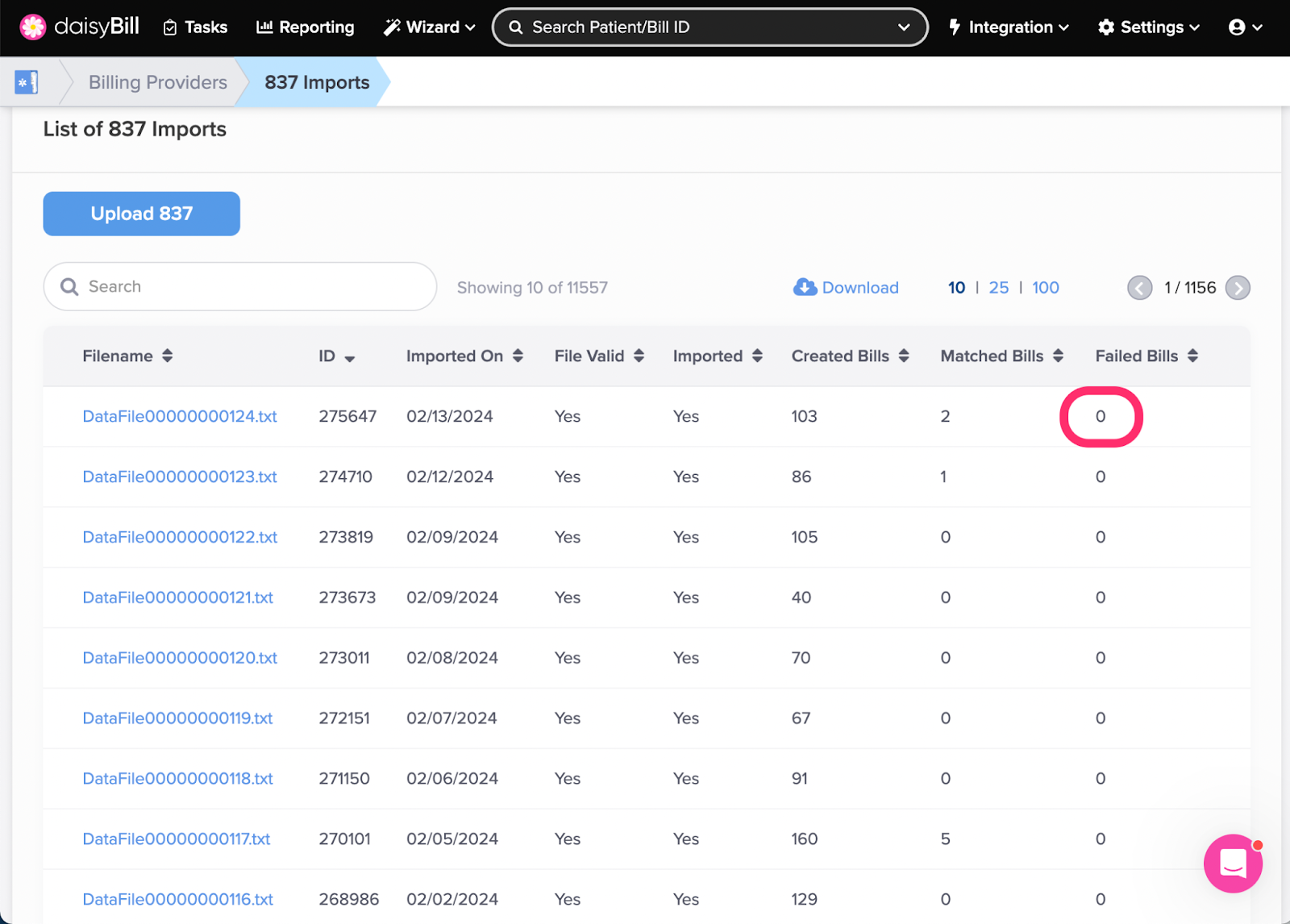The List of 837 Imports page lets you review all imports for your practice at a glance, regardless if the 837 File was uploaded directly to daisyBill or uploaded by STFP.
You can view if the 837 File was valid, processed, and more!
Here’s how it works:
Step 1. From the navigation bar, click ‘User’ icon, then select ‘837 Imports’
A. To import an 837 File directly to daisyBill, click ‘Upload 837’
B. To sort 837 Imports, click the column heading to sort by
C. Click on the 837 ‘Filename’ to view the import details
D. To view the Import ID, refer to the ‘ID’ column
E. To view the date the import was created, refer to the ‘Imported On’ column
F. To see if an 837 File is valid, refer to the ‘File Valid’ column
G. To view if an 837 File was imported, refer to the ‘Imported’ column
H. To view the number of bills imported, refer to the ‘Created Bills’ column
I. To view the number of bills matched, refer to the ‘Matched Bills’ column
J. To view the number of bills that were not imported, refer to the ‘Failed Bills’ column
K. To download the table in .csv format, click ‘Download’
Step 1. On the navigation bar, click the ‘Integration’ icon, then select ‘837 Imports’
Don’t see this option? This means integration is not turned on for your account. Chat with us if you’d like to set up an integration between your legacy system and daisyBill!
Note: The Integration feature is limited to users with the Role of Administrator.
A. To import an 837 File directly to daisyBill, click ‘Upload 837’
Please see this Help Article for more information: Importing 837 Files Explained.
B. To sort 837 Imports, click the column heading to sort by
- For ascending order, click the column heading once.
- For descending order, click the column heading again.
C. Click on the 837 ‘Filename’ to view the import details
Please see this Help Article for more information: 837 Import Explained.
D. To view the Import ID, refer to the ‘ID’ column
If you ever need assistance with an import, the Import ID will help our Integration Team navigate to the import in question.
E. To view the date the import was created, refer to the ‘Imported On’ column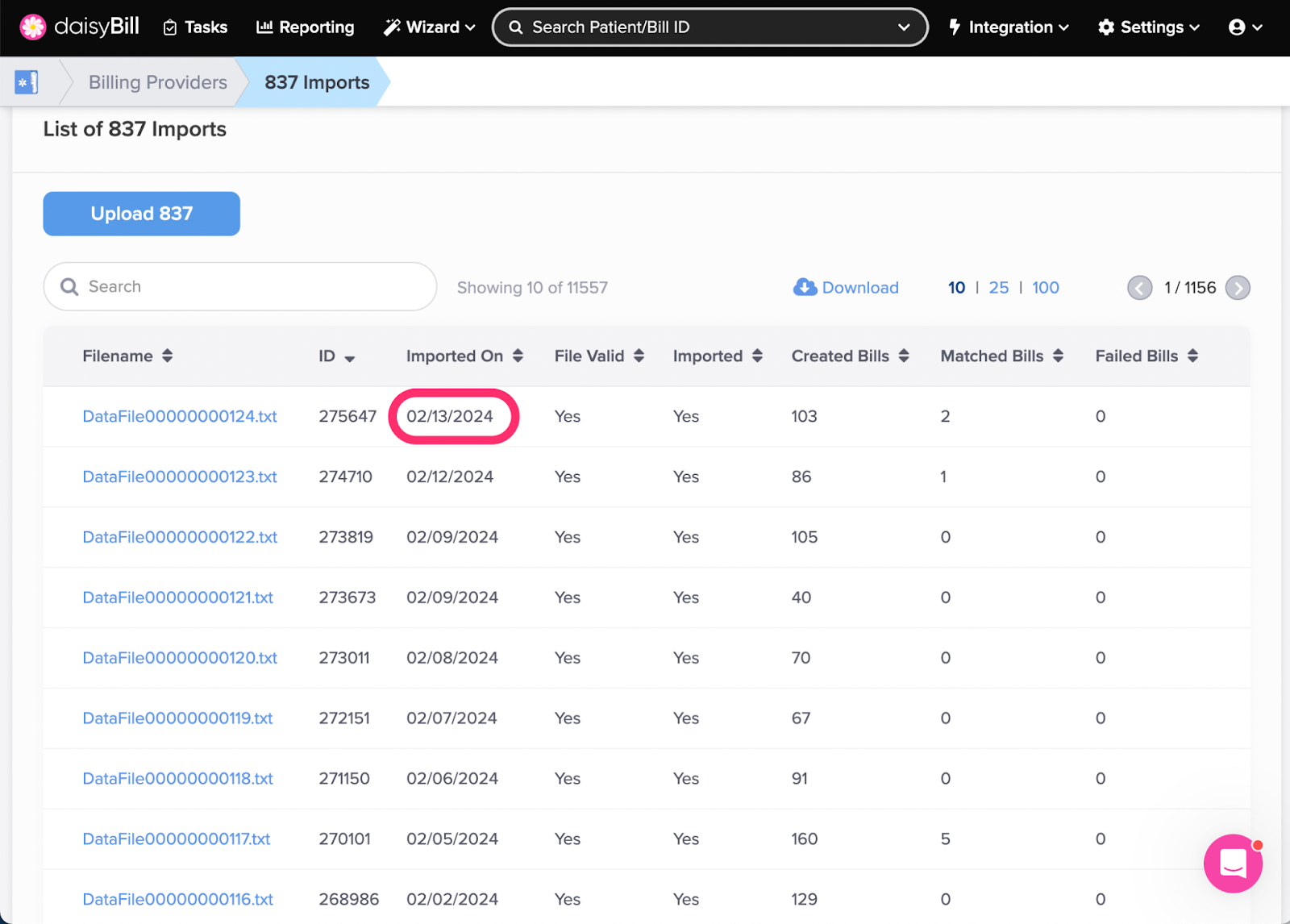
F. To see if an 837 File is valid, refer to the ‘File Valid’ column
If No is displayed under the Valid 837 column, it indicates there is an issue with the format/contents of the 837 File. No data will be imported if the 837 File is not valid.
G. To view if an 837 File was imported, refer to the ‘Imported’ column
If No is displayed under the Imported column, no bills will be imported.
H. To view the number of bills imported, refer to the ‘Created Bills’ column
Created Bills displays the number of bills that were successfully created from the data file.
I. To view the number of bills matched, refer to the ‘Matched Bills’ column
Matched Bills indicates the number of bills in the data file that were matched to existing bills and thus not created to avoid causing duplicates. For additional information on daisyBill’s matching see the Help Article: 837 Import Matching Explained.
J. To view the number of bills that were not imported, refer to the ‘Failed Bills’ column
For more information on why a bill or bills failed, please contact the Help Center.
K. To download the table in .csv format, click ‘Download’
Your download will start immediately.
All done!
